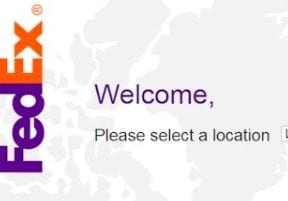Regardless of what your ecommerce site sells, the biggest opportunity for improving your natural search performance is likely optimizing faceted navigation.
Also known as faceted or guided search, faceted navigation applies sets of filters to the list of products shown on your browse grid pages. Choosing product attributes in these filters enables shoppers to narrow the selection of products offered to increasingly hone in on the ones they’d like to purchase.
For example, if you sell high-end writing instruments, you might have filters for brand, material, ink color, and nib type. And the facets or attributes under nib type might include fountain pens, ballpoints, pencils, felt tip pens, gel pens, and rollerballs.
For optimal natural search performance, each of the attributes in these filters generates a page that targets a long-tail keyword. The long tail of search refers to the ability of the enormous number of keywords (that each drive a small amount of searchers to a site) to collectively drive more searchers than big trophy keywords.
Benefits of the Long Tail
In addition to the size of the traffic opportunity, the long tail also represents a higher sales opportunity because shoppers are typically farther along in sales funnel. Someone who searches for “gold Cross ballpoint pen black ink” is much closer to making a purchase than someone who searches for “pen.” The keyword “pen” might represent many times more traffic, but that traffic is much harder to drive to your site and is far less likely to convert.
In other words, the longer the tail is, the bigger the benefit to your bottom line.
Unfortunately, the tail is impossible to target with manual optimization. You can’t optimize the content on enough pages to drive long-tail traffic — there aren’t enough hours in the day. Instead, harness your site’s faceted navigation to programmatically generate the pages that target the long tail automatically.
The value of faceted navigation is in the many thousands of pages that are created and linked to automatically, each of which potentially targets a different long-tail keyword that can drive sales. Some will target keywords that drive higher amounts of traffic and others will seem to be virtually worthless in their ability to drive traffic and sales.
But remember: Each of your filters and attributes has some value to shoppers, or it wouldn’t exist on your site. Isn’t it likely that at some point each faceted navigation page will drive at least one impression or visit or sale? And even if a page doesn’t drive anything, there’s no harm in its existence.
Duplicate Content?
Don’t worry that faceted navigation will create duplicate content. As long as each page created by each combination of filters and attributes displays a different combination of products, it can’t be considered duplicate content. Make sure that the SEO elements display the changing filter and attribute combinations as well. For example, the page for gold Cross pens must have a title tag, meta description, and heading that call it out as the page for gold Cross pens, as compared to the different pages for silver Cross pens or gold Parker pens.
Others worry about wasting crawl equity. This is a real concern for sites with massive amounts of truly duplicate content, because search engine crawlers will only spend so much time on your site. If that time is wasted crawling pages that are duplicates of each other, bots will not be able to identify valuable content as quickly, and may even reduce the amount of time they spend crawling a site. However, with faceted navigation this isn’t a concern because each page is truly unique in its content.
Diminishing Benefits
At this point you’re likely imagining thousands or even millions of pages generated by different combinations of facets within your filters. Certainly there could be many pages, but they necessary to programmatically targeting the long tail.
However, there comes a point at which the combinations of more and more attributes within a single filter no longer represent reasonable natural search benefit. For example, if your site allows shoppers to select multiple attributes from the same filter, such as the gold and silver and black enamel attributes from the materials filter, the likelihood that a searcher would enter a keyword containing all of those attributes in a single keyword is vanishingly small.
In the case of multi-select, limit indexation of pages that represent multiple attributes within a single filter. In this example, either render the page for gold and silver and black enamel pens as uncrawlable by search engines, or insert a canonical tag referencing a page with just one of the filters selected.
If you’re in an industry where the keyword research suggests that people do search for multiple attributes within the same filter, determine how many attributes are valuable and work with your development team to see if a solution can be found.
For example, for shoes and floor tiles shoppers search for the combination of black and white in addition to black and white separately. Making an exception for some combinations and not others may introduce too much complexity in the build, but have the conversation if the data suggests it’s worth it.
See the second installment at “SEO: Your Faceted Navigation Could Be Better.”




